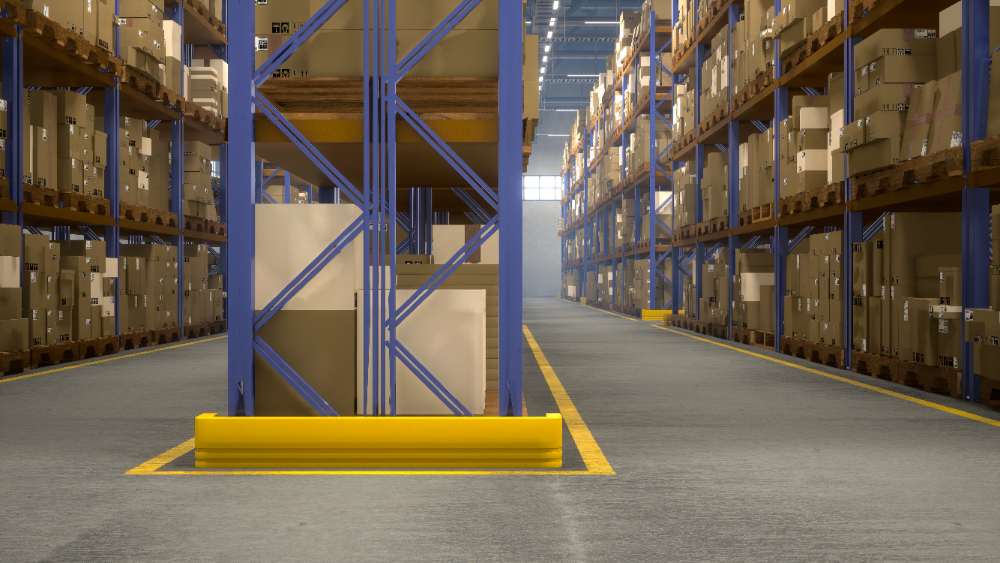The Role of Insulation and Ventilation in Protecting Your Warehouse Assets
5 Mins Read
Published on: 30 December 2024
Last Updated on: 11 February 2025

toc impalement
Warehouses are more than just places for storing goods, equipment, and materials; they are crucial nodes that house components without which the operation of a business cannot be successfully executed.
Protection of such assets transcends the simple use of locks and organized shelving but requires strategic climate control. Insulation and ventilation, though often overlooked, are important in maintaining the ideal conditions within a warehouse.
Poor insulation can cause the fluctuation of temperatures that may damage sensitive goods, while bad ventilation may result in the buildup of moisture, leading to mould growth, corrosion, and even structural problems.
Protection of these assets by using these systems, in addition to protecting assets, helps to enhance energy efficiency and ensures that their assets remain in excellent condition while optimizing their overall performance.
This blog will explain the role of insulation and ventilation in protecting your warehouse assets. It will provide practical advice, from selecting appropriate materials to setting up functional systems, to help keep the warehouse environment safe, efficient, and productive.
With a focus on these factors, companies can ensure their assets are kept in top shape while optimizing overall performance
Why Insulation Matters in Warehouses
So? Why does insulation matter in a warehouse? If you research thoroughly, you will see that insulation provides a great defence against extreme changes in weather. Now, you and I cannot predict these changes, right? But don’t worry! These insulations are a great combat.
If you can properly insulate your warehouse, it will help you save a considerable amount of heat during winter or reduce the unwanted heat during summer.
Insulation is necessary for temperature-sensitive products, such as perishable goods or electronic components.
Fluctuating temperatures can cause these products to deteriorate, thus resulting in financial losses and operational delays. Proper insulation will help to maintain a consistent environment, keeping the assets in pristine condition.
The Importance of Ventilation for Asset Protection
While insulation controls the temperature, ventilation ensures the inside air is clean, dry, and fresh.
Poor ventilation can result in moisture accumulation, which encourages mould, mildew, and corrosion. These problems not only deteriorate the assets but also compromise the structural integrity of the warehouse.
Effective ventilation systems prevent condensation and control humidity levels. They also improve air circulation, reducing the accumulation of dust and pollutants that could impact either the assets or the health of employees.
By maintaining proper airflow, warehouses can safeguard their contents and provide a safer working environment.
Choosing the Right Insulation Materials
Choosing the right insulation materials for your warehouse is essential for maintaining energy efficiency, controlling indoor temperatures, and reducing operational costs. Factors such as climate, building size, and the type of goods stored should guide your selection.
Rigid foam insulation, spray foam, and fiberglass are popular choices, each offering different levels of thermal resistance and moisture control. Investing in high-quality insulation not only enhances comfort but also extends the lifespan of your warehouse infrastructure.
For expert guidance in selecting the best insulation solutions tailored to your needs, contact Quik Therm. Their innovative insulation systems are designed for superior performance, helping businesses achieve optimal energy efficiency and long-term savings.
Ventilation Systems: What You Need to Know
A well-designed warehouse ventilation system helps to safeguard the assets in the warehouse. There are a number of ventilation systems to choose from:
- Natural Ventilation: This takes advantage of well-placed openings that facilitate the circulation of fresh air.
- Mechanical Ventilation: This specific ventilation uses fans and ductwork to control airflow and humidity levels.
- Hybrid Systems: Lastly the hybrid system helps in combining natural and mechanical methods for optimal results.
Consider the size and layout of the warehouse, in addition to the types of goods stored, when designing a ventilation system. A balance between effective airflow and energy efficiency is what really matters in maintaining the ideal environment.
The Role of Vent Silencers in Warehouse Ventilation
While warehouse ventilation systems are essential, they often generate significant noise, especially in large warehouses with extensive mechanical components. This is where vent silencers come into play.
The vent silencer design reduces the noise level to a minimum without making any compromise on the airflow. This reduces the noise pollution. Moreover, it helps in creating a quiet and comfortable environment for the workers. This way, you can improve their productivity along with their well-being.
Are your businesses in need of surefire solutions? Professional grade industrial silencers guarantee both the effectiveness of noise control and compatibility with your ventilation system. Yes! They are engineered to meet the unique demands of industrial settings. These silencers would be an invaluable addition to any warehouse.
Long-Term Benefits of Insulation and Warehouse Ventilation for Your Warehouse
Implementing proper insulation and ventilation is an investment that pays off in numerous ways:
- Asset Preservation. Yes! You can protect goods from temperature and humidity fluctuations. It also reduces the risk of damage and depreciation.
- Energy Efficiency. Both Insulation and ventilation work together to minimize energy consumption. This leads to lower utility bills.
- Workplace Safety and Comfort. A well-ventilated and insulated warehouse provides you with a healthier and more comfortable environment for employees. Moreover, it reduces absenteeism and increases productivity.
- Compliance with Regulations. Proper systems help meet industry standards and regulations, avoiding potential fines or operational disruptions.
Maintenance Tips for Long-Term Efficiency Of Warehouse Ventilation
Keeping your warehouse ventilation system running smoothly is key to a productive and safe work environment. Here are some basic tips on maintenance:
- Regular Inspections: Try to conduct routine inspections to find and eliminate potential problems early.
- Filter Replacement: Always ensure to regularly replace filters to maintain optimal airflow and prevent dust buildup.
- Motor Checks: Inspect and lubricate motors to ensure they operate efficiently and quietly.
- Belt and Pulley Checks: Regularly check belts and pulleys for signs of wear and tear.
- Clean Exhaust Fans: Clean exhaust fans regularly to remove debris and improve airflow.
- Temperature and Humidity Monitoring: Monitor temperature and humidity levels to ensure optimal conditions for your specific needs.
- Professional Maintenance: It may be worth considering having the property professionally checked for any underlying problems and repairs.
Follow these tips, and you can ensure that your warehouse ventilation system will operate efficiently, improve air quality, and contribute to a safe and productive work environment for years to come.
Conclusion
Insulation and ventilation are not just optional features for warehouses. They are essential components for safeguarding assets, optimizing operations, and creating a sustainable business.
By investing in these systems and tailoring them to your specific needs, you can ensure your warehouse remains a secure and productive hub for your business. Take the time to plan and implement these measures, and you’ll reap the benefits for years to come.
Read More:


















Comments Are Closed For This Article